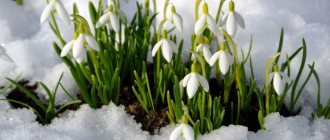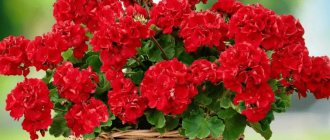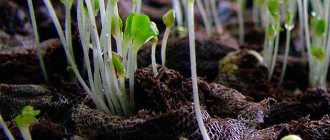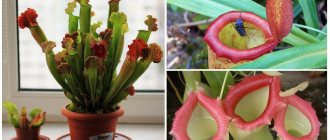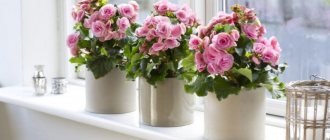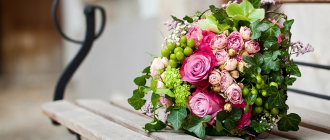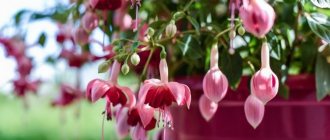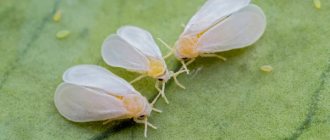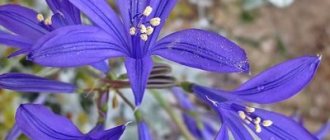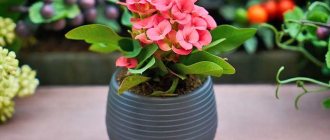Proper and painstaking care of indoor flowers can be an overwhelming task for busy people. But not only for them. Many novice gardeners want to see the result as soon as possible - a beautiful flowering plant that will decorate the room with its appearance. What to do when you want to surround yourself with beautiful flowers, but the growing process seems long and tedious? The answer is simple - choose and plant fast-growing indoor plants. Which ones exactly? You will learn about this by reading the article.
Other types of plants with fast growth
In addition to deciduous and flowering ones, there are representatives of the flora that have an unusual appearance and the ability to quickly vegetate. These are drought-resistant succulents of bizarre shapes, dense succulent ferns and epiphytic plants. Caring for them does not require deep knowledge of plant growing; even a novice gardener can easily cope with the task of growing them.
Fast growing spurge succulent
Most succulents grow very slowly. But there are species that can turn into a beautiful adult plant in just 1 year. Euphorbia has many varieties, all of them are unpretentious in care and develop very quickly. It is able to grow in poor soil, easily tolerates long periods of lack of watering, and caring for it will not be a hassle.
Euphorbia myrtifolia
All varieties of milkweed contain milky sap, which gives the flower its name. This juice has not been fully studied, but it is known that it contains the toxic substance euphorbine, which can cause inflammation of the mucous membranes, as well as burns. For this reason, livestock on pastures try to avoid it
When planting or propagating milkweed, you need to be careful and keep it away from children and pets.
Nephrolepis - indoor fern
Nephrolepis rightfully bears the title of the most popular indoor fern. It gained its recognition due to its unpretentiousness and ability to purify the air from dust and pathogens.
Nephrolepis curly
Lush fern bushes are used in hanging and potted arrangements. Nephrolepis does not like direct sunlight, so it is suitable for landscaping rooms whose windows are oriented towards the shady side of the building. The main thing in caring for a plant is proper watering. The higher the room temperature, the more often the earthen ball is moistened. Ferns are propagated by dividing the bush.
Orchids
Orchids are epiphytes; in natural conditions they grow by attaching themselves to other plants without parasitizing them. Epiphytes, capable of existing without soil, grow very slowly, but some species have adapted to growing in soil and can very quickly shoot out stems and grow foliage.
Orchid Rotterdam
These orchids are propagated by cuttings and grown as potted plants. A year after planting, a medium-sized bush is formed from the cuttings. The fast-growing orchid, Ludisia, is most often grown as a houseplant. Another popular decorative species is the vine-like climbing orchid (vanilla). In addition to beautiful flowers, it has unusual variegated leaves, which are used for room decoration.
How to sow flower seeds so they sprout quickly
An important factor is planting seeds. Below are the rules on how to sow flower seeds.
- Take only “fresh” seeds. “Old” seeds may simply not sprout.
- Carry out pre-planting treatment of the seed: soaking in a growth stimulator or hydrogen peroxide. Some seeds require stratification.
- Plant in damp cloth, and as soon as the seeds hatch, transplant them into the ground.
- Don't plant too deep. The grains simply do not have enough strength to rise.
- When planting small seeds, mix them with sifted sand to distribute them evenly over the surface.
- When growing seedlings, use light, loose and nutritious soil.
- Do not sow outdoors too early. In cold soil, seeds germinate less easily.
Fast-growing indoor plants will not keep you waiting
A pot for a composition of indoor plants.
how to make a beautiful composition of indoor flowers in one pot. They amaze with the variety of not only flowers, but also with the unusual shape of the leaves. Fast-growing indoor plants will appeal to impatient gardeners. Amazing landscaping occurs in a matter of months. By choosing such crops, the housewife saves her money, because adult specimens have exorbitant prices.
Fast-Growing Houseplants Gain Confidence
Creating an original phytodesign in a new home is the main driving force in acquiring such varieties. Moreover, they attract many gardeners with their unpretentiousness. Crops are able to adapt without problems to unfavorable conditions, such as fluctuations:
- temperature;
- lighting;
- humidity.
They recover well from damage. At the same time, varieties never go out of fashion. The dominant ones among them are decorative deciduous ones, although there are also flowering exhibits. Of course, you shouldn’t expect fast-growing indoor plants to be fashionable and popular.
Variegated dieffenbachia and needle asparagus bushes also luxuriously complement the interior.
Exotic vines
The acquaintance will begin with scindapsus. It belongs to the most variegated varieties. The length of its shoots is 50-200 cm. Bright patterns on the heart-shaped leaves decorate walls, flowerpots and other interior components. Annual growth is 1 meter.
Passionflower is a powerful vine with a hardy character. Dense, wide leaves have a glossy surface. Large flowers (10 cm) amaze with their color palette:
- rich blue;
- neon purple;
- snow-white;
- amazingly blue.
They have an unusual structure inside. An unusual design rises above a base of 10 petals and a fleecy layer. This look is created by a 3D format flower.
Passionflower needs constant garter. Especially when it is in a stage of active growth.
Ceropegia amazes with its delicate patterns on dense foliage. It belongs to the succulent family. Its characteristic feature is bare stems, on which small greenery is thinning. Its blooms also have an unusual appearance. They imitate candelabra lamps, which are painted with small ripples.
It turns out they are high altitude
The leaves of white-veined milkweed resemble chestnut leaves, but only with evenly drawn contours. The crown gradually rises, thanks to the uniform fall of the lower leaf plates. From the outside, the decorative tree looks like a palm tree or cactus. Among other things, the plant scatters seeds into neighboring flowerpots, thereby stimulating its offspring.
Some varieties of begonia reach up to 1.5 m. Wide carved leaves 15 cm in diameter adorn the reddish petioles. The spectacular patterns on them stand out thanks to the shaggy spines. The most exotic cultures can envy its decorative qualities.
There are two fast-growing varieties:
- white-spotted or white-spotted;
- hogweed.
The shoots of these flowers are succulent and strongly climbing. In general, begonias give the impression of pompous and pompous exhibits. It's not difficult to take care of them
It is only important to provide them with a humid environment, as well as diffused lighting.
The list of fast-growing indoor plants can be supplemented with coleus, hibiscus, tradiscantia, nephrolepsis and clerodedrum. Without their help, many designers simply would not have been able to complete their task.
Decorative flowering indoor flowers
Flowering types of indoor plants, characterized by rapid growth, are especially popular. Almost all specimens delight the eye not only with their leaf mass, but also with their spectacular flowering .
Hibiscus
The decorative flowering shrub hibiscus, or Chinese rose, has a tree-like crown with many shoots.
Its large bright flowers bloom at the tops of the shoots; they can be simple or double.
The inflorescence of hibiscus is single, funnel-shaped, and the fused stamens and pistil protrude beyond the flower.
Passionflower
This flower has unusually beautiful leaves and flowers of bizarre shapes of various colors. The plant is a liana , the length of which can reach several meters even in a room.
The dense leathery leaves are dark in color, and the star-shaped flowers amaze with the magnificence of the transition of shades - bright blue, light blue or purple.
Begonia everblooming
This small herbaceous plant has waxy leaves on compact stems. The flowers of this plant, although small, look very decorative.
Begonia blooms profusely and can last almost all year round.
Abutilone
Abutilon is popularly nicknamed indoor maple due to the similarity of the shape of the leaves . The flowers of this plant are large, bell-shaped on a thin stem.
The main color scheme is yellow and shades of pink and red.
Coleus
10 indoor plants from ikea
Known to almost every florist and gardener under the name nettle, the bright plant today is rapidly regaining its former popularity. Literally from a miniature sprout a bush of amazing size can be formed in a matter of months. But growth rate is not the only advantage of coleus, although it would be more correct to call them plectranthus according to the latest botanical classifications.
Coleus
On sale today you can hardly find classic coleus from grandma’s window sills: old varieties have completely replaced new hybrids, the luxurious foliage patterns of which will outshine even begonias. The real boom in coleus varieties is the result of their widespread use in garden culture and in modern landscape design, the echoes of which also influenced the status of their indoor counterpart.
Externally, coleus plants most closely resemble nettles. Reaching a height of 10 cm in bushy forms to more than a meter in species with long shoots, all coleus still boast tetrahedral stems and heart-shaped leaves, along the edges of which there are very beautiful denticles. The surface of coleus leaves is velvety, very pleasant to the touch, the veins only emphasize the play of textures. And we can literally talk endlessly about color variations.
Green, red, yellow, white, orange, pink, purple, almost black colors are mixed in incredible combinations, creating bright patterns and ornaments that seem to be invented by the artist. Moreover, the color on each coleus leaf is unique and at least slightly different from its neighbor. Coleus inflorescences, although they resemble clasps with their spicate structure, have a negative effect on shoots and leaves, so it is better to avoid them.
Possibility of using coleus:
- as a color accent;
- to create a bright and cheerful background for relaxation;
- as an optimist plant and companion for crops with classic greens;
- in groups and collections with flowering indoor crops;
- for seasonal decor;
- in large groups with other coleus plants as space dividers.
Required conditions for coleus: full sun to shade.
Features of caring for coleus: pruning, shaping, abundant watering and standard feeding.
Coleus. Malin Fagrell
Shade-loving annual flowers without seedlings
Most hardy annuals need plenty of sunlight. But often in the summer you want to create beautiful flower arrangements not only in the light, but also in the shaded corners of the garden: under trees with dense crowns, near blind high fences, along the northern walls of buildings. Fortunately, among the unpretentious annuals that can be grown without seedlings, there are many flowers that prefer or at least tolerate shade well.
Garden balsam
Impatiens is an unpretentious shrub up to 0.5 m high, with long, succulent and fleshy leaves, as well as large (up to 10 cm) flowers that bloom in summer at their base. The shape of the flowers of different varieties of balsam resembles carnations, rose or camellia inflorescences, their petals can be double or smooth, and the range of colors includes almost all shades except yellow and blue.
Important! In fact, balsam is a perennial plant. However, in open ground it is grown (both with and without seedlings) only as an annual, since even light frosts are fatal for this flower. In this regard, many people often decorate the area with balsam in pots in the summer, and with the onset of cold weather they bring them indoors.
Without seedlings, balsam seeds are sown directly into the soil under covering material in early May. If shelter is not planned, this is done at the end of spring. The plant will begin to bloom in the summer, after 70–90 days, and will continue until autumn frosts. The site should be well protected from the wind, as well as from direct sunlight, ideally located in partial shade. The soil needs to be slightly acidic, fertile and moist (but not excessively). Balsam is fertilized with potassium-phosphorus fertilizers in the summer once every 2-3 weeks.
Cosmea (annual)
A fluffy green “carpet” of thin needle-shaped leaves, above which lush “stars” of flowers of all shades of white, pink and red flutter on tall graceful stems in the summer - this is cosmos. It can also be successfully grown without seedlings. Our most popular varieties of cosmos are double-pinnate (“Sonata”, “Radiance”, “Purity”) and sulfur-yellow (“Bilbo”, “Cross Lemon”).
When sown in the soil without seedlings in late April–early May or before winter, cosmos flowering begins in the summer (late July) and lasts until cold weather. This unpretentious annual is completely undemanding to environmental conditions. Cosmos grows on light, moderately fertile soil; watering in summer is carried out as needed during dry periods. Caring for it comes down mainly to weeding and loosening the soil. In a flowerbed well lit by the sun, cosmos will delight you with an abundance of flowers, and in the shade or partial shade - with lush decorative greenery.
Important! The undoubted advantage of cosmos is that it is not affected by pests.
Phlox Drummond
The unusual flower shape of this herbaceous, unpretentious annual, which can grow without seedlings, resembles an intricate snowflake. Drummond's phloxes are tall - up to 0.5 m ("Star Rain"), medium-sized (double, "Twinkling Star") and short - up to 20 cm ("Pink Promise", "Constellation").
Annual phlox seeds without seedlings are sown in the soil in early spring under covering material. This flower will grow best in partial shade. The soil should be sandy, well-drained, with medium acidity.
The flowering period of Drummond phlox is from June to the end of September (subject to sufficient regular watering in the summer and loosening the soil). These unpretentious annuals are fed with complex mineral compounds approximately once a month.
Advice! To form a lush bush with a large number of flowers, phlox shoots should be pinched.
Forget-me-not
Tiny pale blue flowers with yellow centers on branching stems 10 to 40 cm high, surrounded by elongated gray-green leaves, are both perennial and annual. Currently, more than 50 species of forget-me-nots are known, and the flowers of hybrid plants can be yellow, pink, cream, purple, and white.
The easiest way to grow forget-me-nots without seedlings is to sow the seeds in July directly into open ground and hide them under a covering material for a couple of weeks before germination. This unpretentious flower prefers light and loose soil - moist but with good drainage, and a slightly shaded place in the garden should be chosen. Forget-me-nots bloom better in the shade than in the sun, and this process lasts up to 2 months. In addition, in summer the plant needs to be systematically fed and watered regularly, but not excessively.
Important! A forget-me-not bush can be divided without fear - the root system of this flower adapts perfectly to replanting.
Marigold
The fiery flashes of marigolds, or Chernobrivtsev - lush balls or “baskets” on long legs - abundantly decorate flower beds and front gardens from June to October. These flowers are also convenient to grow without seedlings. Their colors vary from light yellow to dark brown, the petals are double and simple, the height (depending on the type - deviated, erect or thin-leaved) can be from 15 to 130 cm.
When sown without seedlings in early May (with seeds under a film directly in open ground), marigolds will bloom in the summer, in mid-July. These unpretentious flowers grow on almost any soil, and although they prefer sunny areas, they can easily tolerate partial shade. It is not necessary to feed them, but they should be watered regularly, especially in summer during dry periods.
Important! The weak point of marigolds is their intolerance to frost. Even the lightest frost is destructive for these flowers.
Tradescantia
Pests of indoor plants
Everyone's favorite perennial plant, which is found in almost every apartment. Tradescantia has about 75 species, differing in size, color and leaf pubescence. The plant perfectly purifies the air and absorbs harmful substances, which is why it is popular.
Owners of indoor flowers note that Tradescantia produces new shoots very quickly. Especially if its branches touch other pots or plants, the flower tries to expand its boundaries and quickly captures new territory. It may even move into a neighboring flowerpot. Therefore, it is better not to place it close to other colors.
Cherry tomatoes from stepchildren – 60 days
Cherry tomatoes are sweet, tasty, aromatic. They are great for fresh salads. An interesting feature of tomatoes of this type is their ability to quickly root stems and cuttings. You can harvest a harvest from a rooted stepson much faster than from a seedling.
Cutting cherry tomato cuttings
Landing principle
Pinch off a 15 cm long shoot from a healthy cherry tomato bush, remove the lower leaves and ovaries from it. Plant the cutting in moist soil and keep it in a warm place. It should take root in about a week.
6 versatile and unpretentious varieties of cherry tomatoes
Pepper nightshade or Cuban cherry (Malpighia)
A spectacular plant, often simultaneously covered with white flowers and bright fruits of varying degrees of ripeness - from green to orange and red. Propagated by cuttings and seeds. Used for decorative purposes, the fruits are poisonous; in folk medicine, infusions are prepared from them for gargling for sore throats and the oral cavity for inflammatory tissue lesions.
Caring for Cuban cherries involves regular watering and fertilizing, periodic pruning of the bush and replanting in fresh soil. Lighting should be diffused; in summer the optimal temperature is between 18–25°C; in winter it is recommended to reduce it to 15°C.
Best lists
Some varieties attract attention with their extraordinary qualities: appearance, special beauty, endurance or frost resistance. I want to draw your attention to them.
Terry calendula Orange Porcupine - the most unusual
Possessing all the properties of ordinary calendula, this specimen stands out for its original appearance. Large buds resemble needle-shaped bright balls. Tousled double inflorescences look great next to asters, and they also protect them from blackleg disease.
Orange Porcupine Calendula Flower Seeds
Morning glory tricolor - the most decorative
The flowers of this morning glory are very beautiful; they have a blue color, sometimes turning into pink, and a white and yellow core. Large delicate buds look great against the backdrop of rich green foliage. The plant easily tolerates rain and bad weather and blooms profusely until autumn.
Flower seeds Ipomoea tricolor
Peony aster - the most magnificent
These large blooming buds involuntarily evoke admiration among all flower lovers. They look great both in the flowerbed and in bouquets. The bushes are powerful, the inflorescences are held on strong stems. There are many different colors to suit every taste.
Aster peony flower seeds
Gesneriaceae
This is a whole group of magnificent flowering plants that are not difficult to grow from seeds. These include the familiar kohleria, gloxinia, streptocarpus, and saintpaulia. There are no special rules for growing new specimens; these flowers are not too demanding in care. The main thing for them is the presence of light, stable temperature and moderate watering.
Gloxinia. Brian Valentine
All Gesneriaceae are easily propagated by leaf cuttings, but it is seed propagation that makes it possible to obtain new varieties. In stores and from collectors you can find varieties with double flowers of all kinds of colors.
Dimorphotheca is similar to calendula, but more compact
For daisy lovers! This will be my first time growing this flower. Orange varieties are similar to calendula, but are more compact (30 cm tall) and therefore appear fuller and more abundant.
Dimorphotheca
I bought a white Merry Square Dance.
The flower is very similar to osteospermum, only the center of the basket is blue. However, osteospermum must be grown through seedlings, and dimorphotheca must be grown directly into the ground. That's why I bought it.
The seeds can be felt through the bag - they are large. You can sow after May 10th until the 20th. Blooms from June to September.
How to choose?
Large plants should be selected very carefully. The conditions of the apartment should allow you to place the flower in a relatively comfortable environment. Often giant exotics require special care or a special climate in the apartment.
It is best to give preference to the least fastidious specimens
Their appearance also attracts attention and decorates the apartment, but the gardener does not risk losing a new plant due to a lack of knowledge and skills
When choosing a giant you need to pay attention:
- on the speed of growth (the dimensions of the apartment sometimes do not allow keeping adult specimens);
- features of maintenance (to what extent the apartment allows them to be provided);
- appearance.
Comparison of the best varieties
For a visual overview of all types of plants, I have collected them in one table; all their characteristics are immediately visible here.
| Name | Boarding time | Flowering time | Plant height, cm | Peculiarities | Price, rub |
| Calendula | Early spring | June-September | 20-50 | Medicinal, unpretentious | 25-400 |
| Marigold | March | June-October | 30-150 | Strong smell, repels pests | 15-80 |
| morning glory | March | July-October | Liana up to 5 m | The seeds are poisonous | 10-120 |
| Purslane | April | June-September | 30 | Garden purslane can be eaten | 15-140 |
| Petunia | March | From June to autumn | 30-50 | Can overwinter as a potted crop | 15-100 |
| Aster | March, April | July-September | 20-100 | Tolerates frosts down to -5°C | 20-80 |
| Dahlia | April | June-October | 30-200 | Pinching helps the formation of new buds | 20-200 |
Plumeria
Another representative of tropical vegetation is plumeria. This amazingly beautiful flowering plant is also called frangipani. The flowers, opening, exude an incomparable, exotic aroma. In addition to the classic white, the flower has pink, crimson, yellow and even orange colors in its “reserve”.
Plumeria. Jacob Tidwell
Getting it from a seed is not at all difficult, and an adult plant will not cause any trouble. Frangipane grows very quickly, reaches impressive sizes (up to 2 meters), requires frequent replanting and a considerable area indoors, abundant watering and a sunny location.
Trees
Tall trees are usually characterized by especially intensive growth, because they add more than a meter per year. It is with their help that it becomes possible to transform your own site as quickly as possible.
When choosing woody plants for yourself, you should focus not only on the amount of annual growth. Of great importance is the height of an adult tree and the shape of its crown, as well as the area of the planted area, the composition of the soil, and the existing climatic conditions.
Poplar
A large deciduous tree, reaching up to 20-30 m (occasionally up to 40 m), with a loose, wide-spherical or narrow pyramidal crown. The leaves are of very different shapes: from jagged triangular-ovate to even rounded.
The most common poplars found in gardens are: silver or white poplar (Rocket, Nivea), balsam, black (Italica), Chinese (Fastigiata), trembling (Erecta), fragrant, Canadian (Serotina aurea), deltoid (Ash Tower).
Poplar:
- annual growth - from 50 to 100-120 cm;
- life expectancy is on average 100-200 years (sometimes up to 400-600 years);
- winter hardiness is high (zone 4) - from -28 to -35 degrees;
- resistance to urban climate;
- prefers a sunny location;
- grows on any type of soil;
- in general, undemanding;
- It is actively used for alley and windbreak plantings, as well as on dividing strips.
Maple
A highly decorative, spreading tree with beautiful dissected and jagged foliage, especially decorative in autumn. It reaches a height of 20-30 m. The crown is wide-oval, dense, starting low, with picturesque drooping branches.
In culture, silver maple, fan maple (Disectum, Garnet, Bloodgood), red maple (Samme Red, Autumn Blaze), false sycamore (Anthropurpureum), ash-leaved, holly or common (Fassin Black, Golden Globe, Emerald Queen), Tatarian (Ginnala), riverside (Flyme, Durand Dwarf), sugary (Pyramidalis, Laciniatum Vieri).
Maple:
- annual growth - 45-60 cm (up to 80 cm);
- lives from 200 to 300 years (there are older specimens - up to 500 years);
- experiences frosts of about -34...-26 °C (zone 4, 5);
- tolerates transplantation well;
- Grows better in moist soils;
- pruning should be done early, because sap flow begins already at the end of winter;
- flowers are small, honey-bearing;
- shade-tolerant.
Willow
An unpretentious tree crop, characterized by a wide variety of sizes (up to 15-40 m), shapes (crown, tent-shaped, high-vaulted, wide-pyramidal, etc.) and foliage shades (olive, dark green, silver, bluish, gray, etc.) . Drooping weeping species look especially picturesque.
The most common types of willows in landscape design: white or silver (Chermezina, Globular dwarf, Tristis), thin-columnar (Melanostachis, Mont Aso), purple (Pendula), woolly, whole-leaved, goat (Globulous, Kilmarnock), Schwerin, twisting, rosemary, purple (Nana, Lighthouse).
Willow:
- every year trees grow in height by 60-80 cm;
- life span - 20-150 years;
- freezes at temperatures below -28 °C (5A zone);
- loves moist, periodically flooded soils;
- is an early honey plant;
- has high regenerative abilities (reproduces even by stakes);
- undemanding to soils;
- photophilous.
Birch
Growing mainly in the middle zone, it is a tall (up to 45 m), deciduous tree with a straight white trunk and a densely branched openwork pyramidal crown. The main branches are initially directed upward, drooping with age, taking on a horizontal or drooping-drooping (weeping) position.
In gardens and parks you can most often find birch: paper or American white, black (Shilo Splash), weeping or warty (Tristis, Youngi, Royal Frost, Laciniata, Purpurea, Schneverdinger Goldbirke), dwarf (Golden Treasure).
Birch:
- growth per year - 35-45 cm;
- life expectancy - 90-100 years (up to 300 years);
- survives cold down to -45...-40 °C (zone 2) without problems;
- grows on all types of soil;
- very photophilous;
- tolerates pruning well;
- tolerates dry periods;
- evokes special respect among the Slavs.
Deciduous crops
In a short time, you can green up a recreation area on your personal plot by planting fast-growing deciduous trees. Now these are the main landscapers of the whole country. The leaves and flowers of some of them secrete phytoncides that disinfect the air. In just 2–3 years they will provide dense greenery and abundant shade. Most Popular:
| Name | Annual growth, m | Maximum height, m | Barrel diameter, cm | Average life expectancy, years |
| Birch | up to 2 | up to 45 | 50–70 | 300 |
| White acacia | up to 1.5 | until 25–30 | 30–40 | up to 50 |
| Willow | 0,5-1,0 | 15–40 | up to 100 | 20–150 |
| Maple | up to 2 | 30 | up to 100 | 200 |
| Poplar | more than 2 | 40 | up to 300 | up to 400 |
Deciduous crops adapt well to changing weather conditions. Some beneficial substances of these trees are used in medicine. It is better to plant seedlings in the fall. At the initial stage of growth, they need frequent and abundant watering. After successful rooting, they produce strong shoots next year.
The idea of “your own forest” with deciduous trees several tens of meters long is unlikely to occur to a person with a traditional six hundred square meters.
Annual flowers for flower beds, blooming all summer without seedlings
Undoubtedly, every gardener would like the composition in the flowerbed, conceived and planted by him in the spring with love and inspiration, to emerge in the summer and remain lush and bright until the fall, without requiring any special care. These wishes can be easily fulfilled by choosing beautiful, unpretentious annuals that can grow without seedlings and bloom all summer.
Alyssum
A squat (15–40 cm) unpretentious ground cover flower crop, also capable of growing in the garden without seedlings. The dense branched stems of the plant are covered with elongated fluffy leaves and in summer they are densely strewn with small tassels of bright flowers. Their color can be white (“Snow Carpet”), purple-pink (“Aphrodite”), lilac (“Purple Queen”), pink, cream, yellowish, lilac, brown (“Palette”). In addition to annuals, there are also perennial forms of alyssum.
For this unpretentious annual, light, nutritious soil with a neutral reaction and good drainage is preferred. The best flowering of alyssum in summer can be achieved in a sunny area, but partial shade is also suitable.
Without seedlings, the seeds of this unpretentious annual are planted directly into the ground in early May or November.
Warning! Pre-winter sowing of alyssum is carried out in slightly frozen ground so that the seeds germinate no earlier than spring comes.
After seedlings emerge, they should be thinned out. Flowers on alyssum will appear in the summer, after 6–7 weeks. With moderate watering, removal of weeds and fertilizing with minerals (about 4 times during the season), this unpretentious annual will delight with abundant flowers all summer until frost.
Eschscholzia californica
In another way, this graceful and colorful unpretentious flower is called “California poppy.” Its large (about 9 cm in diameter) cup-shaped inflorescences truly resemble the “crown” of a wild poppy or light butterflies frozen on thin branched stems. The petals of Eschscholzia Californian flowers can be double (“Apricot Chiffon”, “Apple Blossom”), semi-double (“Strawberry Fields”) or plain smooth (“Mikado”), and their color varies from all shades of orange to yellow, soft pink and even raspberry (“Fruit Explosion”).
This flower loves light and warmth; it can easily tolerate extreme heat in summer (provided it is watered regularly) and can withstand light (up to –5 degrees) short-term frosts. In fact, this unpretentious plant is a perennial, but in temperate climates with harsh winters it is grown as an annual.
Without seedlings, the seeds are sown directly into the soil in April or October, and immediately in a permanent place, since the flower does not like transplants at all. The soil is preferably loose and sandy loam.
Important! Eschscholzia seeds, intended for sowing without seedlings in the spring, are recommended to be stored on the bottom shelf of the refrigerator.
From the emergence of seedlings to the first flowers, only about 30–40 days pass. Eschscholzia blooms all summer, from late spring until the onset of autumn cold weather (in October).
Petunia
Petunia is a true favorite of gardeners who prefer unpretentious annuals. Whatever varieties and varieties it is not represented today: gigantic and low-growing, spreading and compact, double, large-flowered, fringed... There must be no shades in nature in which the petals of these bright flowers are not painted. In summer, petunia will grow both in a flowerbed and in a box on the balcony or in a hanging pot with a limited amount of soil. As a rule, it is grown using seedlings. However, in warm southern regions it is possible to do it in a simpler way by planting the seeds directly in open ground, under glass or covering material. The optimal time for sowing petunias without seedlings is the end of May.
Despite the fact that petunia is an unpretentious annual, it prefers loamy and sandy loam soils. The first shoots (when planted without seedlings) should appear in the summer, in June, within 7 to 20 days. At first they will grow slowly. As soon as the plants have 3-4 leaves, they should be carefully planted. Regular fertilizing with complex fertilizers and abundant watering in the summer under the roots as the soil dries out is very important for this annual.
Advice! Withered flowers, as well as shoots that have grown excessively in summer, should be removed in time - this will be the key to long and lush flowering of petunia.
Zinnia
Bright, lush “caps” of zinnias in red, orange, white and yellow colors in the summer can decorate and enliven any corner of the garden. In mid-latitudes it is usually grown (including without seedlings) as an annual, since it is not able to tolerate even light frosts. Otherwise, this flower is quite unpretentious. Of the variety of species and varieties of zinnia in our area, the most common are dahlias (“Dream”, “Polar Bear”) and pompon, or lilliputian (“Tom-Thumb”, “Rotkopchen”).
If zinnia is going to be grown without seedlings, the seeds are sown directly into the ground in mid-May, hiding them at first under covering material. The site should be sunny and well protected from the wind, with neutral, well-drained and sufficiently nutritious soil. After 7–10 days, the seeds will germinate. In the future, they should be thinned out, in the summer, water them abundantly at the roots and weed out the weeds in a timely manner. Feeding is applied 2-3 times during the season. Abundant zinnia blooms begin around mid-June and last throughout the summer.
Advice! Zinnia flowers last well and for a long time when cut, allowing you to form beautiful bouquets from them.
Purslane grandiflora
A low (about 20 cm) creeping green “carpet”, the succulent lashes of shoots of which are strewn with fleshy green leaves reminiscent of pine needles. In summer, against this background, lush single flowers shine with bright colorful spots - pink, orange, yellow, cream, red or white. In its homeland, in South America, it is a perennial plant, but in our latitudes, purslane is grown (including without seedlings) as an annual plant, since it is not adapted to cold winter conditions.
Purslane is unpretentious. Sowing it in the soil without seedlings is practiced in the southern regions in April–May, when there is no fear of return frosts. The seeds are mixed with soil or sand and scattered over the surface of the bed, before watering it abundantly with water. You should not sprinkle soil on top of them.
Important! The germination of purslane seeds planted in open ground without seedlings will accelerate if you cover the bed with film.
This unpretentious plant is not demanding in terms of soil composition, but important factors for it are a sufficient amount of sunlight and heat. Under ideal conditions, purslane flowers will abundantly decorate the flowerbed all summer and until about mid-autumn.
Top best colors for an apartment
To make it easier for you to choose flowers, we have selected the most common and best flowers for the home that can be bought in any region. But do not forget that each species requires individual care and conditions. Before purchasing, be sure to check with your florist for detailed care instructions.
Scheffler
Let's start the list with a type that should be in every home of someone who smokes tobacco. He will most likely protect not the smoker, but his relatives. This plant absorbs tar, nicotine and other unpleasant substances and destroys them. This type of sprout belongs to the Araliaceae family. If you have a lot of bright natural light in your apartment, the plant will acquire a bright yellow color.
Aloe
Aloe is the most common sprout and has gained particular popularity. This species completely cleanses the climate of formaldehyde and the unpleasant smell of “new things”. Aloe is used to treat colds: acute respiratory viral infections, acute respiratory infections and rhinitis. The most important thing is that the phytoncides contained help improve brain function and relieve fatigue. This species is considered one of the best house plants that remove formaldehyde.
Dracaena
Dracaena, or as it is popularly called, air orderly. The plant effectively copes with the removal of benzene and trichlorethylene, which enters our apartments through exhaust on the roads.
Dieffenbachia
This type will be useful for people who suffer from pulmonary diseases. Dieffenbachia completely fights staphylococcus bacteria, destroys xylene and toluene.
Interesting to know: Dieffenbachia traps and removes harmful chemicals from paint materials that may be found in floor coverings and walls.
Begonia
Begonia is an assistant for housewives, as it attracts dust and humidifies the air. To start the cleaning mechanism of this plant, spray a little water on the begonia and it will instantly begin to absorb dust into itself. What other advantages are there in this form:
- destroys fungus and microbes;
- absorbs radiation from devices;
- has beautiful looking flowers.
Lemon Tree
A citrus tree is the perfect decor for your home, but it has other benefits besides its appearance:
- purifies the air;
- fights germs and bacteria;
- Essential oils of this tree calm the nervous system.
But it is worth noting that this tree requires special care.
indoor cypress
Cypress purifies the air and makes the climate in the apartment fresh and clean. The main advantage of this sprout is that it absorbs negative ions and gives us positive ones. Owners of cypress trees will immediately feel an improvement in the air in the room.
Gerbera
Gerberas are mainly used as decoration and used to decorate their window sills. But many do not know that this species improves our sleep and removes benzene.
bamboo palm
One of the best indoor plants is the chamedorea or bamboo palm, which can grow up to 2 meters, but there is also a dwarf variety. Hamedorrhea works as a humidifier that can deal with formaldehyde fumes.
Mother-in-law's tongue
If you have children, Sansevieria is your plant. Mother-in-law's tongue absorbs many harmful chemicals such as nitric oxide, formaldehyde and harmful emissions from plastic. The most interesting thing is that this plant can remove carbon dioxide within one night.
indoor geranium
The perfect plant to brighten up your space while fighting germs and other harmful bacteria.
Important: geranium releases beneficial essential oils that improve our sleep and restore the nervous system. But this sprout causes allergies in many people.
If you have allergies in your home, refrain from buying geraniums.
Spathiphyllum
Another cleaning assistant, it is even called a “bedspread”. In addition to its beauty, it has a number of advantages: it destroys mold and cleans the air from bacteria, carbon dioxide, acetone and benzene.
Violet
A flower of peace that will relieve depression and fatigue. Violet will lift your spirits and protect against illnesses. What other advantages are there:
- cleans and moisturizes the room;
- removes carbon monoxide from the air;
- stimulates brain function.
This list contains the best flowers for the home, which will not only decorate your interior, but will also do a great job of improving your home climate. Each flower is endowed with individual beauty that will highlight your apartment style.
How to correctly combine flowers in flower beds
When choosing unpretentious annuals without seedlings for a beautiful flower bed, designed to decorate the site in the summer, you need to keep in mind a few simple but important rules for planning a flower garden. Tastefully selected combinations of shades, combinations of various sizes and shapes, taking into account the compatibility of plant species that are supposed to be planted in the neighborhood, as well as their flowering dates, can turn a flower arrangement into a real work of art.
First of all, you should decide what type of flowerbed you are planning:
- regular (as a rule, it has a strictly defined shape and an ornamental pattern; all flowers appear on it almost simultaneously);
- irregular (species selected for it bloom in a certain sequence, as if replacing each other);
- green meadow of non-flowering plants.
The key issue is also the location of the flower bed - in a sunny place, in partial or complete shade. One flower bed should contain plants that have similar requirements for the level of illumination of the area, the type of soil and its moisture content. In addition, it should be borne in mind that not all unpretentious annuals can be good neighbors for each other. So, sweet peas should not be planted next to violets: the latter will not be able to grow fully, finding itself in a depressed position. But asters go well with petunias and nasturtiums, and marigolds with phlox: some flowers can protect others from certain pests and diseases.
An equally important point is the color scheme used as the basis for the future composition. In accordance with it, the flower bed can be:
- monochrome (consist of plants painted in the same color scheme);
- with a “gradient” effect (display a smooth transition of 2-3 colors or shades of the selected color from dark to light and vice versa);
- contrasting (when the main color is “shaded” by one or more opposite colors on the color wheel);
- multicolor (combining a large number of different colors and shades).
Important! “Warm” colors – red, orange, yellow – attract attention. “Cold” ones - violet, blue, cyan, green - are calmer, they are often used for the background. White color is considered neutral because it can successfully smooth out any contrasts.
In order for the shades of flowers to be clearly visible in the flowerbed, plants should be planted not one at a time, but in groups (preferably at least 3-5 copies), leaving a distance between them, taking into account the intensity and speed of their growth in the summer. The composition looks attractive if the flowers are planted more sparsely in the center, and denser closer to the edge.
The height of the plants plays an important role in the proper design of the flower bed. When combining species of different sizes, you should never plant tall flowers in the foreground - the rest will simply not be visible behind them. But they look impressive in the center of the composition or in the background of a one-sided flower bed. Low-growing and creeping plants are usually used to form borders.
Examples of interesting flower beds using unpretentious annuals grown without seedlings and blooming all summer are presented in the video
Ivy (Hedera)
It is an evergreen vine with decorative leaves of green or variegated color. Ivy is characterized by rapid growth; in a year the length of its shoots can increase by 1 m. It is also famous for its longevity - in its homeland, in a number of European countries, there are specimens aged 500 years or more. For normal development, ivy requires a room temperature of 18–20°C. At higher values, the plant feels comfortable thanks to periodic spraying or humidifying the air in some other way.
It is advisable to provide variegated species with bright, but diffused lighting, otherwise their color will become uniformly green. Ivy with regular leaf colors can grow on a northern windowsill or at some distance from a southern or eastern window. Water the plant as the soil dries out: in warm weather - 1 or 2 times a week; when kept in a cool room in winter, it is enough to moisten the soil once every 2 weeks. The nutrient substrate should be light, loose, and contain humus and sand.
Question to an expert What types of unpretentious plants prefer abundant watering and are not afraid of constant soil moisture? They prefer to grow in water and do not suffer from excessive moisture: cyperus, bamboo, bacopa carolina, pontederia, eichornia, anubias, calamus, graceful isolepis. They are ideal for beginners, as there is no need to worry about stagnant moisture, which is detrimental to ordinary plants. Also, species growing in water can increase the air humidity in the room and it is useful to place containers with them next to other indoor flowers.
How unpretentious are annuals?
Most annuals grown without seedlings are, in fact, unpretentious: they do not require pruning, withstand spring cold, show high resistance to various diseases and practically do not suffer from insect pests. However, this does not mean that these flowers do not need to be looked after at all. Of course, even unpretentious annuals need to be watered from time to time in the summer, fed with fertilizers, removed withered flowers and weeded out weeds that interfere with their growth.
Requirement for sunlight
The majority of unpretentious annuals grown without seedlings are photophilous. The abundance of sunlight in summer is a necessary factor in the growth and development of these plants, and therefore a flower bed with them should be arranged on a well-lit side of the garden plot.
At the same time, there are species of unpretentious annuals that tolerate partial shading well (cineraria maritima, hybrid coleus, fragrant tobacco). These flowers will feel good in summer in areas where light penetrates through a certain obstacle (tree crowns), or in partial shade. Moreover, some unpretentious annuals that can be grown without seedlings (such as mimulus, balsam, everflowering begonia) are harmed by direct exposure to sunlight, causing the flowers to burn out and slow down their development. For them, diffused light is even recommended.
In what soil can annuals be grown?
Unpretentious annuals grown without seedlings, as a rule, are not too demanding on the composition of the soil. These flowers can be planted almost anywhere, including areas near the house itself, where particles of paint, whitewash and other substances used in repairs often fall. However, the more fertile the soil, the more lush and vibrant the flowerbed will be in the summer. Therefore, before planting seeds of unpretentious annuals, the soil is freed from weeds, carefully dug to a depth of 25 cm, enriched with compost, manure, and complex fertilizers are applied.
Unpretentious annuals grown without seedlings should be fed in the summer mainly with organic fertilizers in liquid form: infusions of herbs, slurry, special ready-made compounds sold in gardening stores.
Important! Unpretentious annuals grown without seedlings are advised to fertilize with nitrogen-containing substances in August and September in order to prolong their flowering period. However, it should be remembered that excess nitrogen fertilizing can lead to rapid growth of greenery; in this case there will be relatively few flowers.
How often do you water unpretentious annuals?
Unpretentious annuals take the nutrients necessary for the formation and development of flowers from the soil along with moisture. The soil under plants grown without seedlings should not be allowed to dry out. However, it is recommended to water these flowers moderately, mainly in summer during dry periods.
Important! It is necessary to ensure that the soil on which unpretentious annuals planted with seeds (without seedlings) grow always remains loose and well-drained to avoid stagnation of water at the roots.
Climbing perennial fast-growing plants
Fast-growing plants for the garden and garden come in different heights, which must be taken into account when choosing greenery, as well as different degrees of growth speed. Installing strong supports is necessary so that the sprouts cling to the tendrils or wrap around them. Growing is not difficult. Special efforts may be required only at the stage of planting and rooting, when the sprout needs regular watering, tying up and shaping directions for growth. Almost all perennial ornamental vines need to be covered for the winter. Let's look at the most popular examples.
Wild grapes
They are planted in both the northern and southern parts of the site. Features in the location affect the color of the leaf plate. It can be rich green, yellow, purple-orange. Grapes are picky about soil composition. It must be fertile.
Typically, woodiness of the lower part of the column occurs within 1-2 seasons. Until this happens, you should take care of the correct slope or tie it up for even growth. From several sprouts you can create original braids or patterns, which will undoubtedly add extravagance to the composition.
Maiden grapes are especially popular, as they are not whimsical, are distinguished by their original leaf color depending on the season, and even bloom beautifully. This vine is green in spring and purple in autumn. Fruits in the form of black berries give a special effect. Grows up to 20 m, clinging with tendrils.
More about wild grapes - in the article “Girl grapes“.
Spectacular ivy
Clinging to any unevenness, it perfectly camouflages fences and walls. It is shade-loving, which is uncharacteristic of most green spaces. In our region, it is loved for its resistance to low temperatures. But it is demanding in terms of care in terms of watering.
Moisture is necessary for the root system to strengthen. This tree-like vine has carved leaves. It grows very quickly and literally in one season one sprout can cover an area up to 2 m high and one and a half meters wide. These are the best perennial climbing fast-growing plants for a fence that will suit any garden.
You can learn more about ivy in our article.
Hop
Densely growing greenery creates corners of coolness in the area and looks very attractive.
In the process of rooting and further development, he is demanding of such nuances as:
- regularity of watering;
- feeding;
- prevention and control of aphids.
Winds clockwise. It blooms in July and lasts until the end of summer. There are two types of hops. One of them, Japanese, is an annual, and the second is a perennial and is called climbing or ordinary. A temperate climate suits it. If it is not possible to frequently water the rhizome, then you can plant grass or shrubs nearby that create shade.
Large-leaved tree plier
Perennial, winter-hardy, climbing, fast-growing plants are used for landscaping areas where the soil is not always full of nutrients and sunlight is either partial or, conversely, constant.
In such conditions, a climbing vine called wood pliers can survive. It is suitable for any climatic conditions and does not require maintenance. But there is also a negative aspect: trees cannot grow next to it due to the power of the root system.
Fast-growing annuals grown without seedlings
For unpretentious annuals, the period from germination to the first flowers blooming takes on average 60 to 90 days. However, among this group of plants there are many that will not test the gardener’s patience for so long. The names and photos of unpretentious annual flowers grown without seedlings, which will take less than two months in the summer to proudly shine in the flowerbed in all their glory, can be found below.
Calendula (marigold)
Marigolds, or calendula, are very beautiful, unpretentious annuals that can grow without seedlings. Bright yellow or orange flowers on low (up to 0.5 m) velvety stems with dense patterned green foliage in summer resemble little suns. In addition, they have medicinal properties.
These unpretentious annuals are cold-resistant (tolerate frosts down to –5 degrees), love light and moisture, but at the same time take root well even on poor soils, poor in nutrients.
To grow calendula without seedlings, its seeds are sown in open ground in the spring (late April or early May) or autumn (October) in shallow (1–2 cm) grooves 15–20 cm apart. The emergence of seedlings should be expected in 1–2 weeks, and this unpretentious annual will delight you with flowers for the first time in the summer, after 40–50 days. If you do not disturb the plant, it will remain blooming for a month. However, if you thin out the flowers from time to time, you can extend this period from June to October.
Important! Thanks to the ability of calendula to repel many insect pests, this unpretentious annual is often grown without seedlings not only in flower beds, but also in beds with berries and vegetables.
Gypsophila graceful
A low (0.4–0.5 m) bush in the shape of a ball, the highly branched shoots of which are strewn with small gray-green leaves and a thick cloud of small delicate flowers. Their petals are predominantly white, although in some varieties of this unpretentious annual they are both rich red (“Carmine”) and pink in various shades (“Rose”, “Double Star”).
To bloom in summer, gypsophila seeds are planted (without growing seedlings, directly into the ground) in April-May, making sure that it does not grow too often - or, after waiting for shoots, the plantings are thinned out. It is advisable to choose a site that is well-lit, with light and fertile (ideally calcareous) soil. This unpretentious annual, capable of growing without seedlings, needs watering in the summer exclusively during dry periods. The flowers will bloom 40–50 days after the shoots emerge, and this process will continue for about a month and a half.
Advice! Twigs of graceful gypsophila cut in summer are perfectly stored as dead wood, decorating winter bouquets.
Godetia
This herbaceous, unpretentious annual can also be grown without seedlings. It is a small spreading bush (from 15 to 60 cm), the straight stems of which, branching from the base, end in large silky “cups” or “bells” of flowers. They can be regular or double, and the color of the petals varies from white to red, apricot or peach (combinations of two or more different shades in one flower are not uncommon).
This unpretentious annual should be planted in the ground without seedlings in April–May in an area with loamy, slightly acidic soil. In a bed covered with film, seedlings will sprout in 7–10 days. After another 45 days, in summer, flowers should appear.
When the plants have 2-3 true leaves, they will need to be thinned out or transplanted, maintaining a distance of 20-25 cm between the bushes. The soil under godetia grown without seedlings should be loosened and watered as needed. It is advisable that the flowerbed with this unpretentious annual in the summer have slight shading during the hottest afternoon hours. In this case, the plant will delight with flowers from mid-July until frost.
Important! Godetia is an unpretentious plant, but for its tall varieties support is desirable. It will not allow the thin stems of this annual to break under the weight of the flowers.
Iberis umbellata
Small semi-shrubs (on average up to half a meter) with lanceolate leaves and bright small flowers of 4 petals, collected in umbrella inflorescences, impress with a variety of colors (white, lilac, purple, pink, lilac) and a delicate pleasant aroma. This unpretentious annual can easily grow without seedlings on any soil (although it prefers light loam). It tolerates frost well, is light-loving, but also accepts partial shade. Watering in summer should be regular, but moderate. Iberis is fertilized with mineral fertilizers twice a season.
This unpretentious annual is grown without seedlings, sowing seeds in open ground before winter or in spring (in May). In the latter case, seedlings will appear in about 2 weeks, and flowers in the summer, after 40–50 days.
Advice! The flowering period of Iberis lasts only about a month, so to prolong it it is worth sowing the seeds in several stages.
Nigella Damascus
A beautiful, unpretentious annual that is grown without seedlings not only for decorative purposes, but also as a spice. Its straight stems, 30–40 cm long, are covered with thin, feathery leaves resembling the needles of coniferous trees. The stem of this unpretentious annual ends in a small flower (white, red, blue or light blue) with double petals and large stamens. After flowering, a box with small black seeds forms in its place.
Advice! Nigella damask seeds can be kept in your closet with your outerwear as a moth repellent.
This unpretentious annual prefers to grow on light, loose soil with neutral acidity and without excess moisture. The area where this flower grows should be sunny and protected from the wind in summer. Sowing seeds in the ground without seedlings is carried out in the fall (before the onset of frost) or in the spring (in March–April). Nigella Damascus will begin to bloom in the summer, after 60–65 days. Its flowering period usually lasts 1.5–2 months.
Soil for climbing annuals
For annual vines, soil that is pre-fertilized with humus and mineral fertilizers is suitable.
Climbing annual plants are best planted in virgin soil. After fertilizing, digging, and weed control, the soil fertility will increase.
And in 2-4 years the virgin soil will turn into a clean bed.
And you can already grow vegetables on it.
All annual climbing flowers prefer loose, nutritious soil that allows water and oxygen to pass through well. If the soil is heavy, in addition to organic fertilizers, sand is added to loosen it.
Advantages of decorative climbing flowers
Before we look at the annual climbing plants that are planted in the garden, let’s look at their benefits:
- Annuals that climb are profitable from an economic point of view, because the seed material is inexpensive. With minimal costs you can turn a dull backyard into a blooming garden.
- You can use annual plants to create stunning decorative compositions.
- Annual vines grow very quickly and already in June delight with their beauty.
- Climbing annuals are easy to care for. Flowers that are planted near a net, fence or dead tree do not need to build a support.
The advantages of annual climbing flowers include a wide color palette. Both inflorescences and leaves are decorative.
Agrostemma - cutie for flower meadows
It seemed to me a good match for Heavenly linen: pink and blue.
Agrostemma
I have the Milas variety, for some reason in Google images it is not pink, like on the package, but lilac. Also good.
The seeds are round, not small, sown in May or before winter. The bushes branch strongly (height 50 cm), bloom profusely, but they need sunny clearings. This is the perfect flower to create your own meadow. Not everyone likes mowed lawns.
I plan to scatter agrostemma and flax over my lawn (I won’t cut it). I think it will be bright and natural at the same time.
